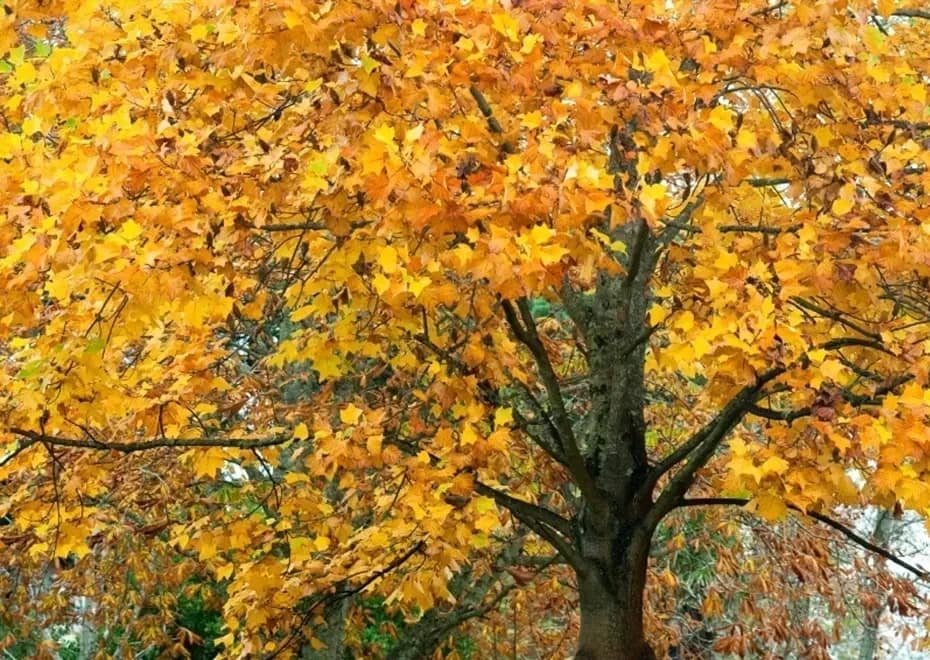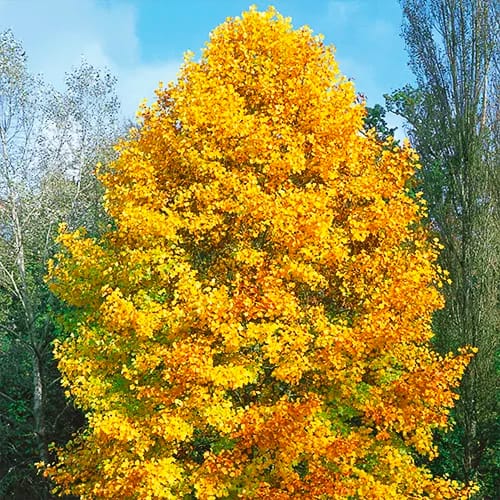The tulip poplar, also known as Liriodendron tulipifera, is one of the most magnificent trees found in North America. Towering above other species, the tulip poplar is renowned for its large, tulip-shaped flowers and stately height, making it a favorite among landscapers and gardeners alike. However, this isn’t the only tulip that deserves attention. The world of tulips is vast, with a stunning array of varieties, each bringing its unique charm to your garden. Whether you’re looking to buy tulip bulbs or plant a new tulip yellow flower bed, this guide will walk you through everything you need to know.
Click Here To Know About The Majestic Tulip Tree: Liriodendron TulipiferaUnderstanding the Tulip Poplar
The tulip poplar is a fast-growing, deciduous tree that can reach heights of up to 150 feet. It is prized for its straight trunk, large leaves, and distinct greenish-yellow, tulip-shaped flowers that bloom in late spring to early summer. Despite its name, the tulip poplar is not a true poplar but belongs to the magnolia family. The flowers resemble tulips, hence the name, and they are a magnet for bees and hummingbirds.
Click Here To Know A Complete Guide to Tulip PlantingChoosing the Right Tulip Varieties for Your Garden
When it comes to tulips, the choices are endless. From the delicate tulipa apricot beauty to the bold tulipa purple prince, there’s a tulip variety for every taste and garden style. Some of the most popular varieties include:
- Tulipa Pink Impression: This variety is known for its large, deep pink flowers that make a striking impact in any garden.
- Tulipa Spring Green: A unique variety with creamy white flowers that have a green stripe running through each petal.
- Tulipa Apricot Beauty: A soft, peach-colored tulip that adds a touch of elegance to any floral arrangement.
- Tulipa Purple Prince: A stunning variety with rich purple petals, perfect for creating a vibrant contrast in your garden.
- Tulipa Triumph: Known for its sturdy stems and wide range of colors, this variety is a gardener’s favorite.
- Tulipa Apricot Parrot: A striking tulip with frilly, apricot-colored petals that are sure to stand out.

Best Time to Plant Tulip Bulbs
Timing is everything when it comes to planting tulips. The best time to plant tulip bulbs is in the fall, about 6-8 weeks before the ground freezes. This allows the bulbs to establish roots before the winter, leading to a strong, healthy bloom in the spring. If you’re wondering about the best time to grow tulips, the answer is simple: plant in fall, bloom in spring.
Click Here To Understanding the Tulip Leaves TreeFinding the Perfect Bulbs: Tulip Bulbs for Sale Near Me
When you’re ready to start your tulip garden, the first step is finding quality bulbs. Whether you’re searching for tulip bulbs near me or want to order tulip bulbs online, it’s important to choose bulbs that are firm, free from blemishes, and have a good weight to them. You can often find spring green tulip bulbs or other unique varieties like tulipa pulchella and tulipa darwin at local garden centers or through reputable online retailers.
How to Buy Tulip Plants and Bulbs
Whether you’re planning to buy tulip plants already potted or want to start from bulbs, the process is simple. For those who prefer a hands-on approach, purchasing bulbs and planting them directly into your garden is the most rewarding option. If convenience is key, look for potted tulips that are ready to display. When buying, consider the size and color of the flowers, as well as the blooming period.
Click Here To Know The Beauty of Pink TulipsPlanting Tulips: Step-by-Step Guide
Once you’ve decided on your tulips and found tulip bulbs for sale near me, it’s time to plant. Here’s how:
- Choose the Right Location: Tulips thrive in well-drained soil with plenty of sunlight. Make sure your chosen spot gets at least six hours of sunlight daily.
- Prepare the Soil: Dig a hole about 6-8 inches deep and loosen the soil to allow for proper drainage.
- Planting the Bulbs: Place the bulb in the hole, pointy side up, and cover with soil. Space the bulbs about 4-6 inches apart.
- Watering: After planting, water the bulbs thoroughly. This helps settle the soil and starts the rooting process.
- Mulching: Adding a layer of mulch helps protect the bulbs from freezing temperatures.
Here Are The Beauty of Tulip Bulbs Caring for Tulips After Planting
Once your tulips are planted, caring for them is relatively easy. Water the bulbs during dry periods, especially in the fall and early spring. Fertilizing in early spring with a balanced, slow-release fertilizer can also boost bloom quality. As the flowers begin to fade, resist the urge to cut the foliage until it turns yellow. This allows the bulb to store energy for the next year’s growth.
Growing Tulips Indoors: Tulip Bulbs in Water
For those who want to enjoy tulips indoors, growing tulip bulbs in water is a fascinating option. This method allows you to witness the entire growing process, from root development to flowering. To grow tulips in water:
- Choose a glass container with a narrow opening to support the bulb.
- Add a layer of decorative stones or glass pebbles at the bottom.
- Place the bulb on top of the stones, pointy side up.
- Add water until it just touches the base of the bulb.
- Place the container in a cool, dark place until roots develop.
- Once roots are established, move the container to a sunny spot and watch your tulips grow!
Understanding Tulip Colors and Their Significance
Tulips come in a wide range of colors, each carrying its own symbolism. For example, a tulip yellow flower often symbolizes happiness and cheerful thoughts, while purple tulips like tulipa purple prince are associated with royalty and admiration. Choosing the right color can add a meaningful touch to your garden or floral arrangements.
Click Here To Understanding Tulip Roots
Common Problems and Solutions When Growing Tulips
Even with the best care, tulips can face challenges such as pests, diseases, and environmental stress. Common issues include:
- Bulb Rot: Often caused by poor drainage, which can be mitigated by planting bulbs in well-drained soil and avoiding overwatering.
- Aphids: These tiny insects can be controlled with insecticidal soap or by introducing natural predators like ladybugs.
- Failure to Bloom: This can result from planting bulbs too shallow, poor soil conditions, or bulbs that were not properly chilled before planting.
Tulip Poplar and Its Role in Ecosystem
Beyond its beauty, the tulip poplar plays a vital role in the ecosystem. Its flowers provide nectar for pollinators, while its large size offers shelter to various bird species. Additionally, the tulip poplar is used in timber production, known for its lightweight and easy-to-work wood, making it a valuable resource in carpentry and construction.
FAQs
What is the best time to plant tulips?
The best time to plant tulips is in the fall, 6-8 weeks before the first frost.
Where can I buy tulip plants?
You can buy tulip plants at local garden centers or order them online from reputable sellers.
Can tulip bulbs be grown in water?
Yes, growing tulip bulbs in water is a great way to enjoy tulips indoors.
What are some popular tulip varieties?
Some popular varieties include tulipa pink impression, tulipa spring green, and tulipa purple prince.
How do I care for tulips after planting?
Water regularly, fertilize in early spring, and allow the foliage to die back naturally after blooming.
What does a tulip yellow flower symbolize?
A tulip yellow flower symbolizes happiness and cheerful thoughts.

